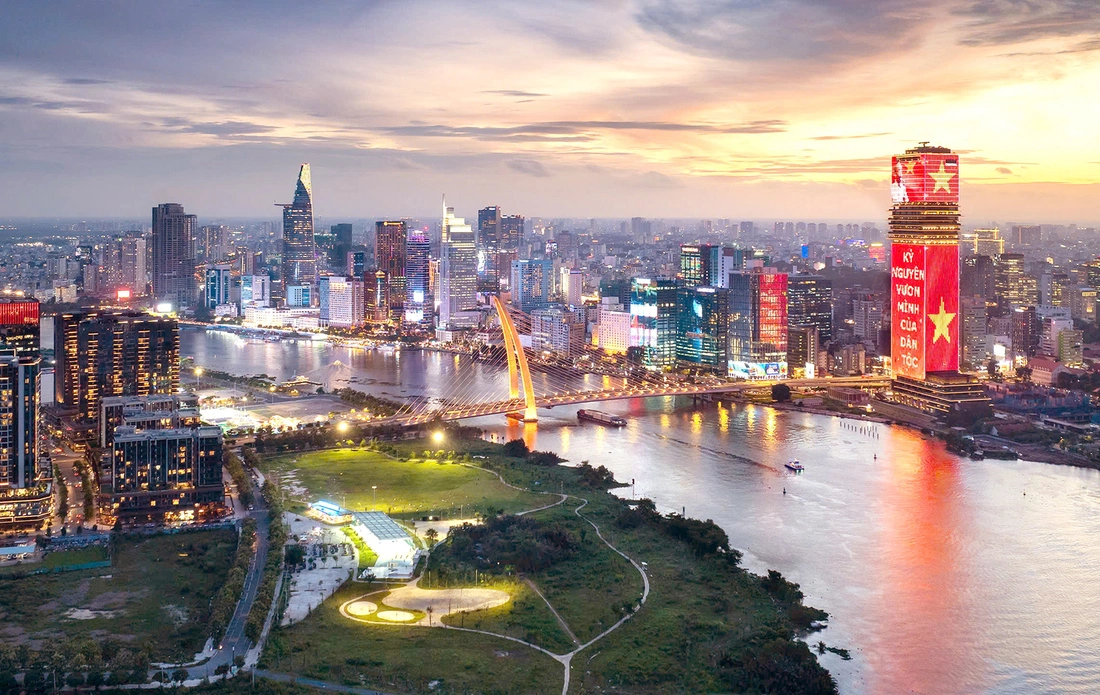
There will be a series of new traffic projects that will change the face of Ho Chi Minh City - Photo: VAN TRUNG
"The city will implement with high determination, clear people, clear work, specific products and must be associated with 'people's happiness' as required by General Secretary To Lam ," Chairman of the Ho Chi Minh City People's Committee Nguyen Van Duoc emphasized in an interview with Tuoi Tre about the city's infrastructure development.
He said the new term of Ho Chi Minh City has a turning point advantage, which is the institutional revolution and the organization of the two-level local government apparatus along with four key resolutions that have opened up unprecedented opportunities for Ho Chi Minh City.
By 2030, a strategic infrastructure framework will be in place.

Chairman of Ho Chi Minh City People's Committee NGUYEN VAN DUOC
* Ho Chi Minh City residents are very interested in the rapid and strong movements of Ho Chi Minh City in the first days and months of the term with many new projects and policies. Can you shape the framework of Ho Chi Minh City's urban infrastructure in this term?
- After the merger, more than ever, Ho Chi Minh City determined to build a modern, multi-modal infrastructure system, seamlessly connecting financial centers, industrial parks, seaports, airports and logistics centers.
Therefore, the 1st Ho Chi Minh City Party Congress (term 2025 - 2030) identified the key task of quickly completing the strategic transport connection framework.
The mission by 2030 is that the city will focus on investing in the three closed belt roads 2, 3 and 4. Complete all radial expressways to connect the region synchronously such as expressways Ho Chi Minh City - Chon Thanh, Bien Hoa - Vung Tau, Ho Chi Minh City - Moc Bai, Ho Tram - Long Thanh airport...
Existing routes are also being expanded, including national highways and gateway projects to increase traffic capacity. In parallel, there are a series of large, strategic bridge projects such as Phu My 2, Dong Nai 2, Cat Lai, Thu Thiem 4, Can Gio - Vung Tau sea bridge - tunnel project...
In addition to the traffic infrastructure, there will be synchronized key social infrastructure such as Rach Chiec Sports Center, International University in Hoc Mon, Binh Quoi - Thanh Da urban area, Can Gio sea encroachment urban area, Ho Tram resort and industrial parks in the old Binh Duong area...
* So, how can Ho Chi Minh City residents imagine their travel by 2030, sir?
- I can confirm that by 2030, the last year of this term, Ho Chi Minh City's traffic infrastructure will be very different; travel, transportation, and relaxation... for city residents and tourists will be more convenient than ever.
At that time, the modern transport system not only served the travel needs within the city but also seamlessly connected functional zones - from industrial parks, financial centers, new urban areas to seaports and airports.
Radial expressways connecting with beltways will form an efficient traffic network, helping people move easily between regions.
It can be imagined that from Long Thanh airport to the city center is only about 30 minutes; from Moc Bai to the city center is about one hour; from Thu Dau Mot you can go straight through the Ho Chi Minh City - Chon Thanh - Thu Dau Mot - Ring Road 2 expressway to get to the seaport or the city center very quickly.
Or the expanded Ho Chi Minh City - Trung Luong - My Thuan expressway combined with the National Highway 1 expansion project will also create a high-speed inter-regional traffic corridor, significantly reducing transportation time and costs.
In particular, the coastal route of Ho Chi Minh City - Can Gio - Vung Tau will be accelerated in this term. In particular, the Can Gio - Vung Tau sea bridge - tunnel project, about 14km long, which was assigned by Ho Chi Minh City to Vingroup Corporation for research, will be the key.
This sea route will combine bridges and underground tunnels for ocean-going vessels, similar to the Hong Kong - Macau - Zhuhai sea route. This is not only a strategic traffic project but also a symbol of the "dare to think, dare to do" spirit of Ho Chi Minh City in the new era.
In addition, the coastal route will be deployed simultaneously to open a completely new economic-tourism corridor, and at the same time be a "shortcut" shortening the distance from the Mekong Delta to Vung Tau by about 50km, connecting seamlessly with the national coastal road network.
I believe that is the happiness that people are waiting for, Ho Chi Minh City is determined and will do it.
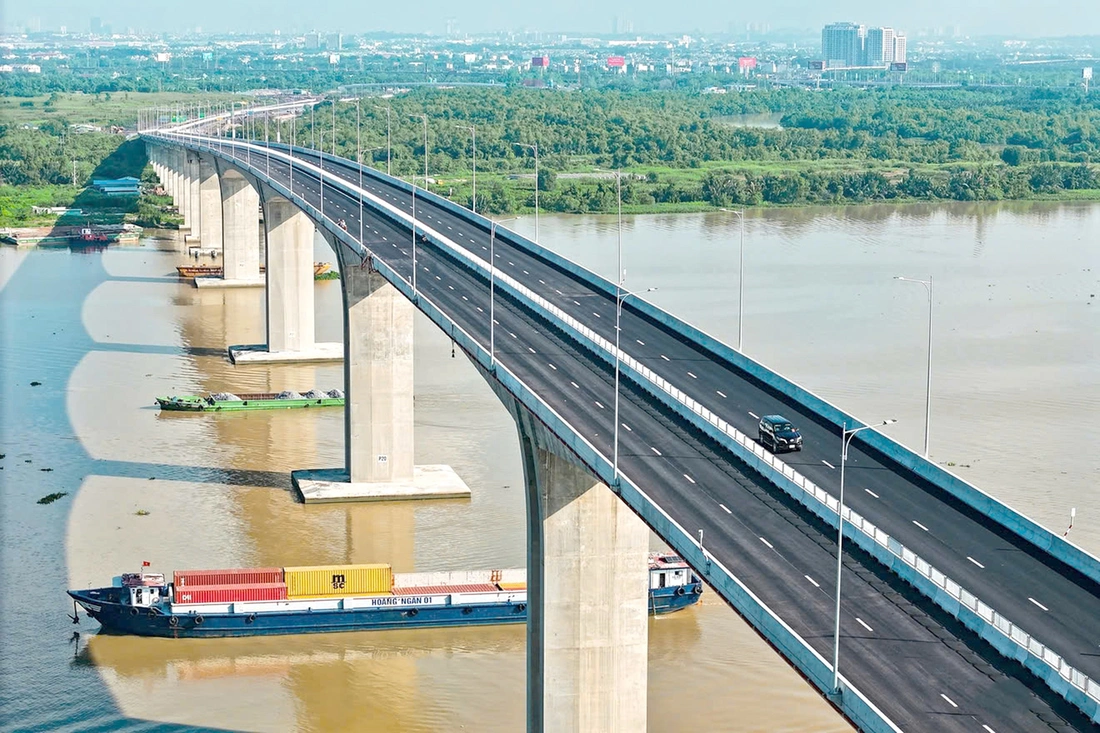
Nhon Trach Bridge on Ring Road 3 was opened to traffic in August 2025, connecting Ho Chi Minh City and Dong Nai - Photo: CHAU TUAN
There will be a huge shift in infrastructure from now until the end of the year.
* In addition to roads, it is known that currently Ho Chi Minh City agencies are also assessing and preparing day and night for the metro revolution?
- That's right! In this term, Ho Chi Minh City will focus all its resources on building metro and railways. This is not only a modern transportation solution, but also a fundamental solution for a civilized, green and sustainable city.
The city has determined the roadmap from now until 2030 to simultaneously deploy 11 routes, of which 5-6 routes will be completed by 2030, including: Ben Thanh - Can Gio high-speed railway, metro line 2 Ben Thanh - Tham Luong, Ben Thanh - Thu Thiem - Long Thanh airport route, part of metro line 6 from Tan Son Nhat airport to Phu Huu intersection connecting Ben Thanh - Thu Thiem - Long Thanh airport route and two routes from Thu Dau Mot to the center of Ho Chi Minh City. These are corridor routes with very large traffic volume, connecting corridors, very important development focal points of Ho Chi Minh City.
The 2030 - 2035 phase will complete the following routes, including the Bau Bang - Cai Mep railway. This is a national railway route, a part of the route from An Binh - Cai Mep is being studied by the Ministry of Construction. However, Ho Chi Minh City has also proactively researched in advance and assigned Becamex Group to complete the documents.
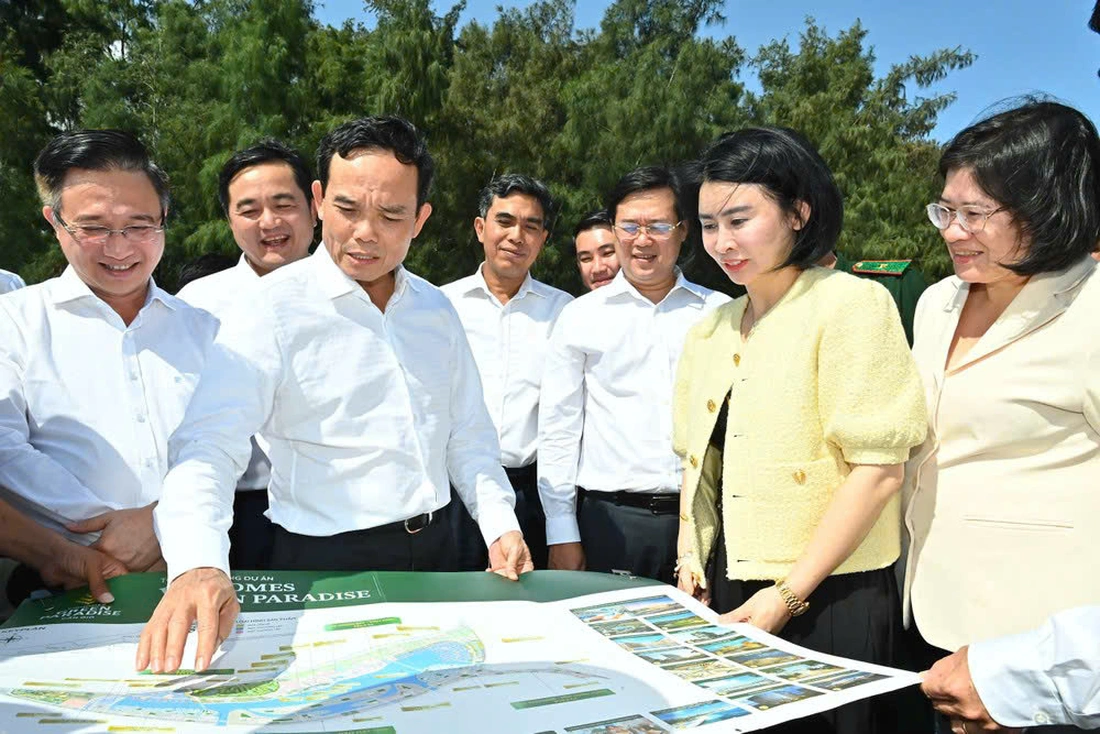
Ho Chi Minh City leaders always pay special attention to infrastructure development. In the photo: Secretary of the City Party Committee Tran Luu Quang with Standing Deputy Secretary Le Quoc Phong, Deputy Secretary Dang Minh Thong, Deputy Secretary Van Thi Bach Tuyet and leaders of departments and branches are listening to a representative of Vingroup Group report on the Can Gio coastal urban area on November 8. This is an infrastructure project that is considered to change the landscape of Can Gio, along with the sea route to Vung Tau and the high-speed railway to Ben Thanh, will turn Can Gio into a new infrastructure center - Photo: VIET DUNG/SGGP
In the near future, Ho Chi Minh City will coordinate with Dong Nai to research and propose that Ho Chi Minh City take the lead in implementing this route. This is a particularly important route, directly connecting industrial parks and super ports, bringing goods from industrial areas to seaports in just a few hours.
Currently, the Ministry of Construction is also implementing the North-South high-speed railway (expected to start construction in 2026) and the Ho Chi Minh City - Can Tho railway. Thus, along with the urban railway network of Ho Chi Minh City connecting with the provinces, as well as the national railway, traveling within the city and the Southeast provinces and other regions will be very convenient.
In addition, Ho Chi Minh City is promoting procedures to invest in modernizing Cai Mep port cluster and Can Gio international transit port into a modern port system of world stature. At the same time, reviewing and adjusting the planning to expand and increase the capacity of Con Dao airport.
* With a huge amount of work and projects, what fundamental and strategic measures does the city have to implement the projects, sir?
- Ho Chi Minh City has never had so many transport and infrastructure projects launched at the same time as this period. But with a strong decentralization mechanism and high determination, I have complete confidence in the feasibility and progress of the project.
I say it is feasible because currently the policy mechanisms have opened up with a very favorable and clear legal corridor and strong decentralization according to the motto: locality decides, locality does, locality is responsible.
Most of the projects are decentralized to Ho Chi Minh City to preside over, decide, be proactive and creative in implementation. In addition, investment methods are also expanded and more flexible, similar to international practices.
In terms of resources, in addition to central support, Ho Chi Minh City mobilized capital and proactively made the most of new mechanisms to develop strategic infrastructure. The city also reviewed all land funds and public assets, and developed TOD models associated with metro and railway projects to create resources for reinvestment in infrastructure.
Ho Chi Minh City has also developed an implementation plan based on the "six clear" motto: clear people, clear work, clear time, clear responsibility, clear product, clear authority. The participating entities identified this as an important political task, focusing time, intelligence and allocating sufficient human resources to participate actively and proactively, with a high sense of responsibility for the common task, contributing to the development of the city.
The city's apparatus is operating in sync with the desire to develop infrastructure, accelerating the city's breakthrough. From now until the end of the year, people will see a huge movement in the city's traffic infrastructure with many strategic projects to be started.
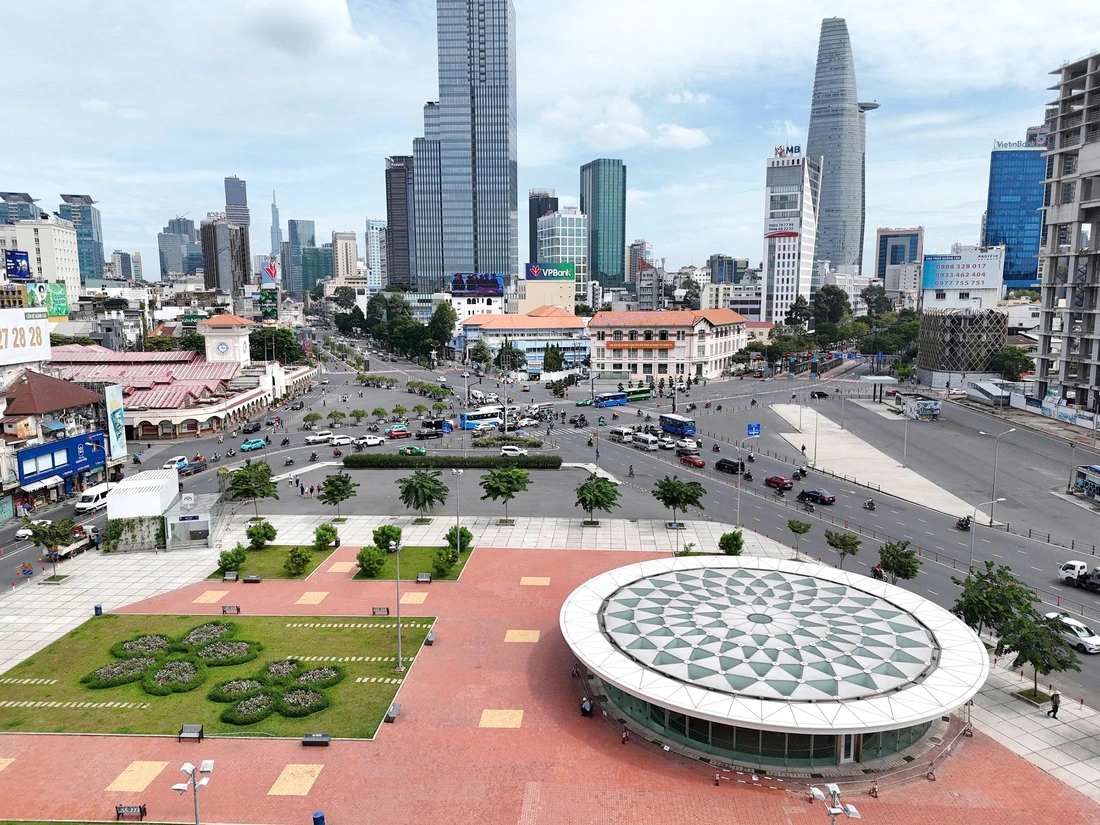
Ben Thanh will be the convergence point of metro lines, high-speed railways and 12.5ha underground space will be formed - Photo: CHAU TUAN
Entrusting responsibility to businesses
* Ho Chi Minh City is assigning many large projects to private enterprises. How do you evaluate the role of private enterprises in this process of the city?
- Never before have businesses proactively proposed to directly participate in strategic projects in Ho Chi Minh City like today. And Ho Chi Minh City has also trusted and is ready to assign major responsibilities.
Specifically, the City assigned Vinspeed Company to develop the Ben Thanh - Can Gio railway line; assigned Vingroup Corporation to research and invest in developing the 12.5-hectare underground space under the Ben Thanh area and the Can Gio - Vung Tau sea-crossing road; assigned THACO Group to research and invest in the Ben Thanh - Thu Thiem - Long Thanh airport railway line; Sovico Group to invest in metro line No. 4; Masterise Group to invest in Phu My 2 bridge, research metro line No. 3...; assigned Becamex to research and invest in the Cai Mep - Bau Bang route and some expressways in Ho Chi Minh City.
At the same time, the City also assigned Sun Group Corporation, which is participating in investing in strategic infrastructure projects such as the metro road along the Saigon River, to develop social infrastructure such as sports centers and functional urban areas that are the driving force for the development of Ho Chi Minh City.
The city leaders have great confidence in the domestic business community, which has strengths and enthusiasm, and is ready to contribute to the development of the city and the country. Assigning projects to domestic businesses not only promotes autonomy but also creates new momentum for development.
Scale of some major transport projects
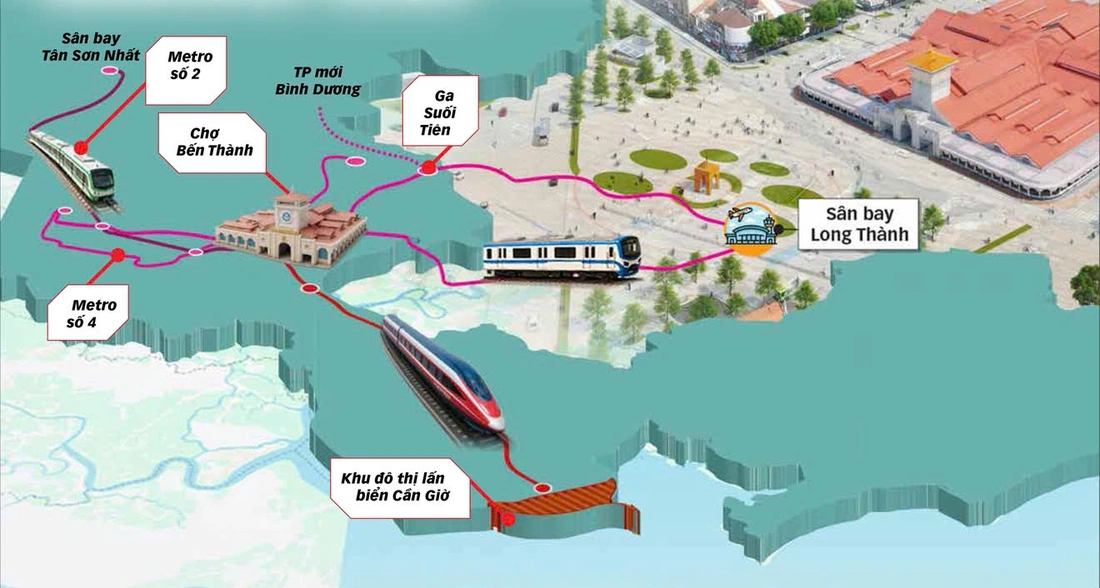
Connecting railway lines to the Ben Thanh area will turn this place into the "heart" of public transport in Ho Chi Minh City - Graphics: TAN DAT - DUC PHU
- Ben Thanh - Can Gio high-speed railway: nearly 53km, designed speed of 350km/h, capital of more than 86,000 billion VND invested by VinSpeed High-Speed Railway Investment and Development Joint Stock Company. The project is a breakthrough in engineering and technology in Ho Chi Minh City, laying the foundation for the future express train system.
- Metro line 2 Ben Thanh - Tham Luong: more than 11km, investment capital of about 54,000 billion VND, is the first pilot project applying the special mechanism from Resolution 188 of the National Assembly.
- Ben Thanh - Thu Thiem - Long Thanh airport urban railway: connecting the 46km Thu Thiem - Long Thanh railway (about 3.5 billion USD) and metro line 2 (Ben Thanh - Thu Thiem section) more than 6km long, is being assigned to THACO for research.
- Major bridges connecting Ho Chi Minh City and connecting provinces: Can Gio Bridge, investment capital of about 11,000 billion VND; Thu Thiem 4 Bridge, about 6,030 billion VND. Three bridges connecting Ho Chi Minh City with Dong Nai include Phu My 2 Bridge about 16,445 billion VND, Cat Lai Bridge about 18,816 billion VND, Dong Nai 2 Bridge 11,708 billion VND
- Ho Chi Minh City coastal road: the main route from Go Cong (Dong Thap) crosses Can Gio connecting Phuoc An port (Dong Nai), two branch routes connect Cai Mep port and the Can Gio - Vung Tau sea route. Currently, Vingroup Corporation is assigned to research and invest in the Vung Tau - Can Gio sea route.
Sweet fruit from determination and new mechanism
Chairman of the Ho Chi Minh City People's Committee Nguyen Van Duoc said that in recent days, the team of officials of Ho Chi Minh City and businesses have been researching and speeding up procedures day and night so that from now until before the Lunar New Year 2026, the people of Ho Chi Minh City will see more of the first sweet fruits from the determination and new mechanisms.
With new mechanisms from Resolution 188 of the National Assembly and the revised Railway Law, the investment progress of metro and railway projects has been shortened by at least three years compared to before. The city is determined to start construction of metro line 2 Ben Thanh - Tham Luong and high-speed railway Ben Thanh - Can Gio with Vinspeed as the investor in late 2025 or early 2026 to celebrate the National Party Congress.
In addition, the draft amendment to Resolution 98 to be submitted to the National Assembly for approval with very new mechanisms, creates a special legal corridor to motivate Ho Chi Minh City to develop, especially infrastructure.
Source: https://tuoitre.vn/chu-tich-ubnd-tp-hcm-nguyen-van-duoc-hien-dai-ha-tang-vi-hanh-phuc-cua-nguoi-dan-20251112081248314.htm


![[Photo] Prime Minister Pham Minh Chinh attends a conference to review one year of deploying forces to participate in protecting security and order at the grassroots level.](https://vphoto.vietnam.vn/thumb/1200x675/vietnam/resource/IMAGE/2025/11/12/1762957553775_dsc-2379-jpg.webp)



![[Photo] Highways passing through Dong Nai](https://vphoto.vietnam.vn/thumb/1200x675/vietnam/resource/IMAGE/2025/11/12/1762940149627_ndo_br_1-resize-5756-jpg.webp)









































































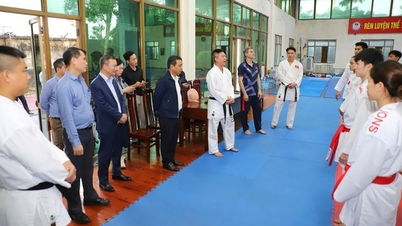

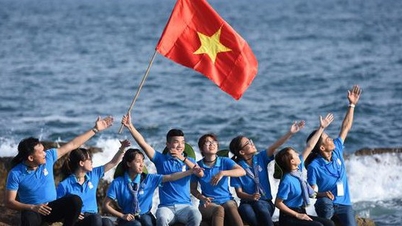





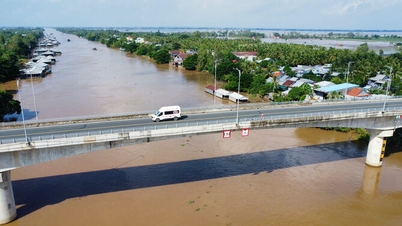

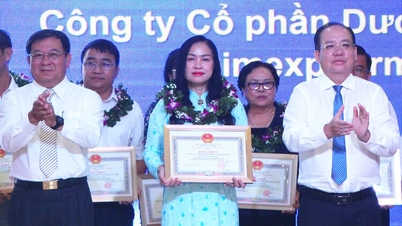
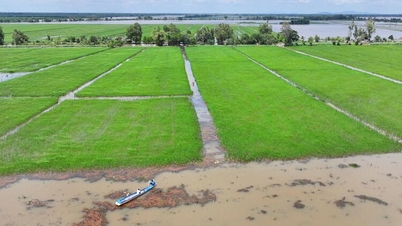





![Dong Nai OCOP transition: [Article 3] Linking tourism with OCOP product consumption](https://vphoto.vietnam.vn/thumb/402x226/vietnam/resource/IMAGE/2025/11/10/1762739199309_1324-2740-7_n-162543_981.jpeg)





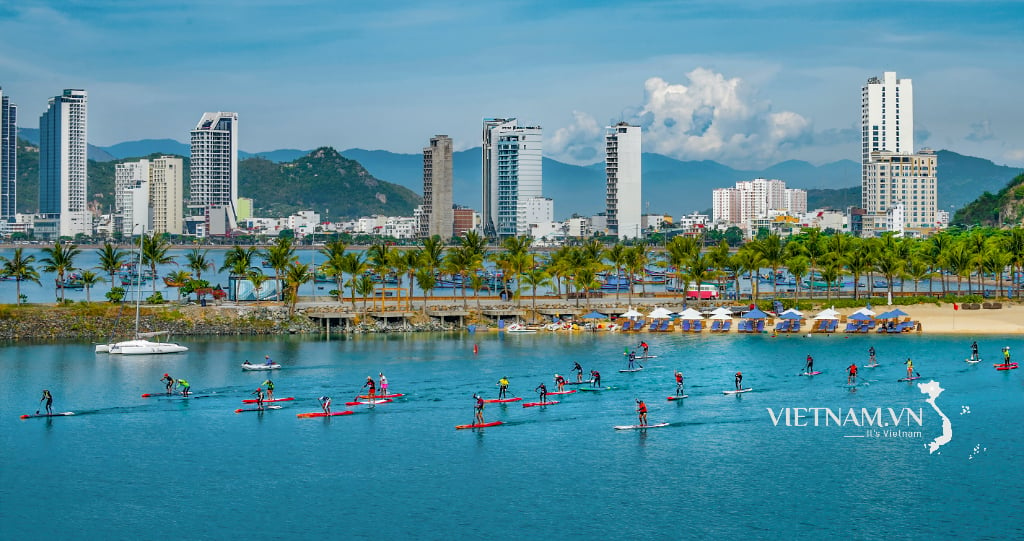

Comment (0)